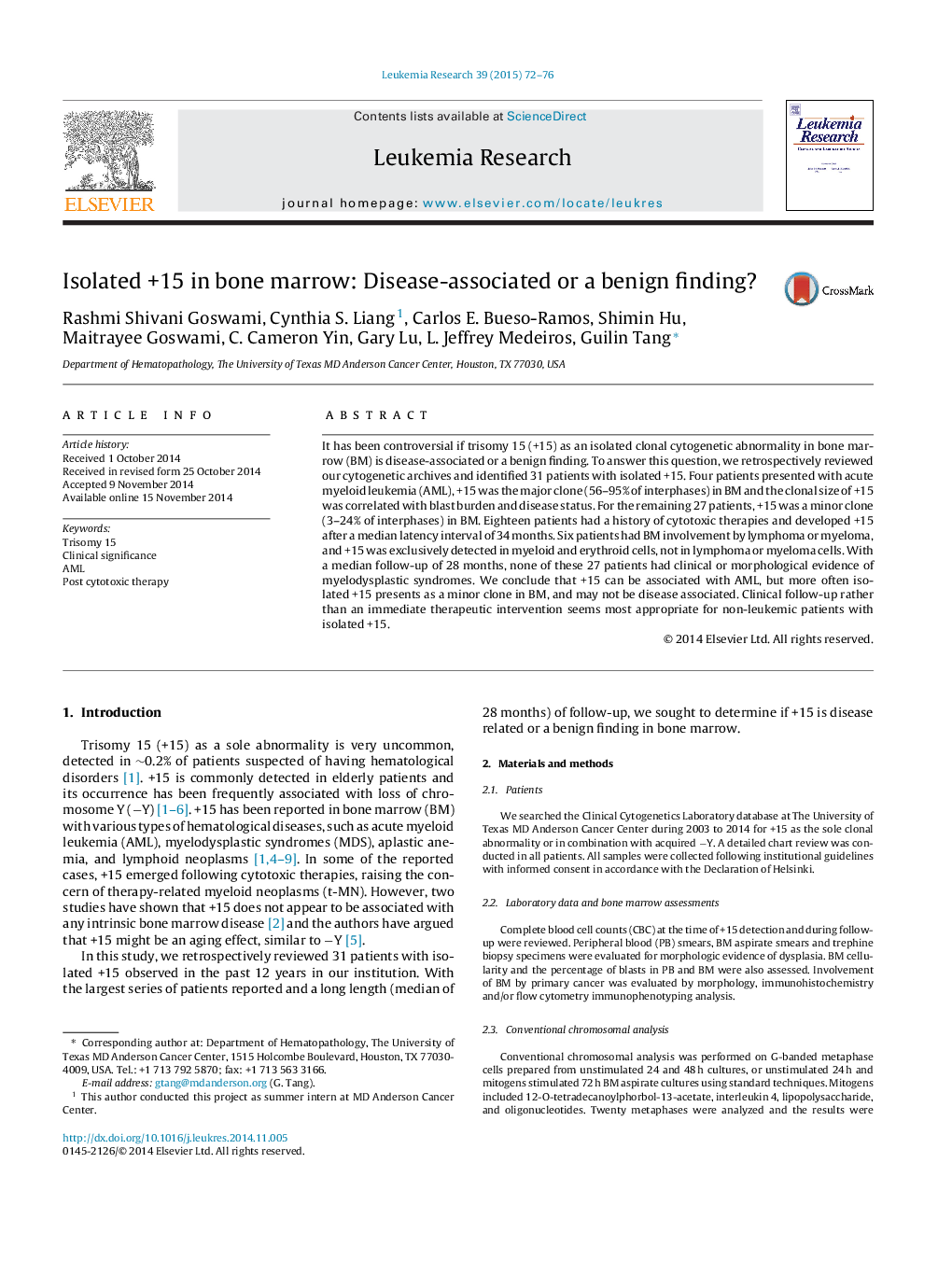| Article ID | Journal | Published Year | Pages | File Type |
|---|---|---|---|---|
| 2136643 | Leukemia Research | 2015 | 5 Pages |
•Isolated +15 usually presents as a minor clone in BM and may be a “benign” finding.•Isolated +15 presents as a major clone in AML and likely to be disease-associated.•+15 may not be associated with lymphoma/myeloma while it presents as a sole abnormity.•Recognizing these “benign” +15 is critical to avoid unnecessary therapeutic intervention.
It has been controversial if trisomy 15 (+15) as an isolated clonal cytogenetic abnormality in bone marrow (BM) is disease-associated or a benign finding. To answer this question, we retrospectively reviewed our cytogenetic archives and identified 31 patients with isolated +15. Four patients presented with acute myeloid leukemia (AML), +15 was the major clone (56–95% of interphases) in BM and the clonal size of +15 was correlated with blast burden and disease status. For the remaining 27 patients, +15 was a minor clone (3–24% of interphases) in BM. Eighteen patients had a history of cytotoxic therapies and developed +15 after a median latency interval of 34 months. Six patients had BM involvement by lymphoma or myeloma, and +15 was exclusively detected in myeloid and erythroid cells, not in lymphoma or myeloma cells. With a median follow-up of 28 months, none of these 27 patients had clinical or morphological evidence of myelodysplastic syndromes. We conclude that +15 can be associated with AML, but more often isolated +15 presents as a minor clone in BM, and may not be disease associated. Clinical follow-up rather than an immediate therapeutic intervention seems most appropriate for non-leukemic patients with isolated +15.
